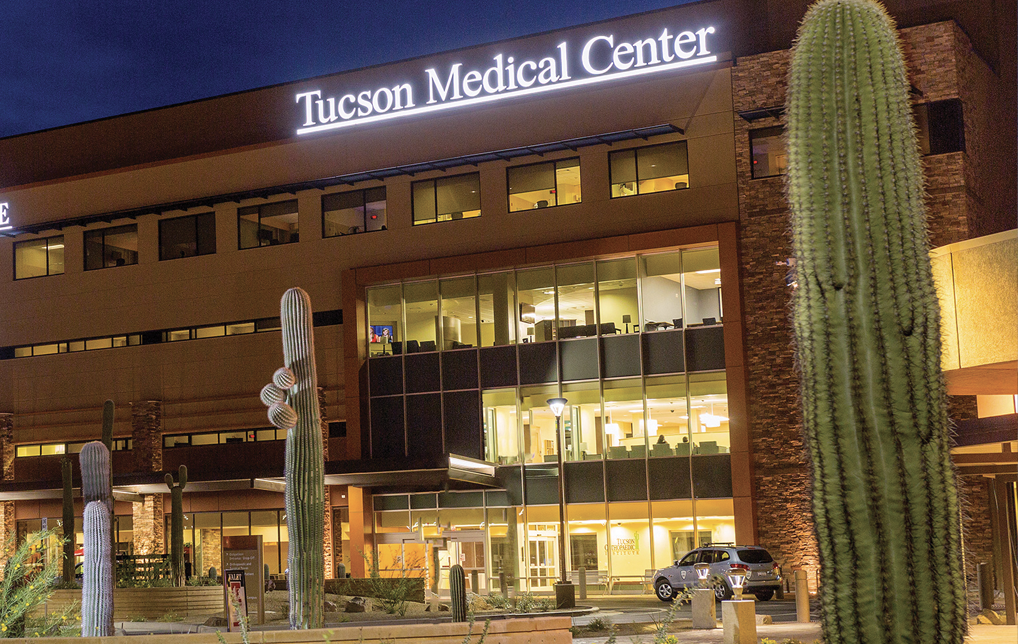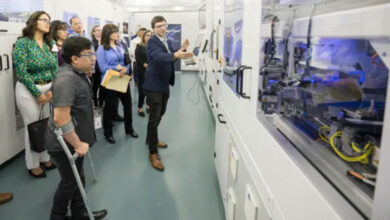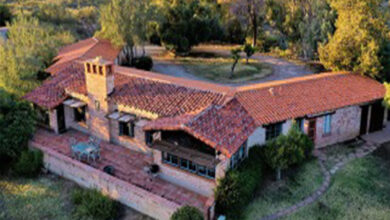
Three Tucson Medical Center Buildings Named to National Register of Historic Places
Three buildings on the Tucson Medical Center main campus have been named to the National Register of Historic Places.
“These buildings are at the gateway of the Grant Road entry,” said architect Corky Poster. “They could have just been made into three museums, but TMC took a lot of time and effort to find an economically sustainable use of these old buildings.”
Poster, an architect and principal planner at Poster, Mirto, McDonald architectural and planning firm, worked on the rehabilitation.
“We restored woodwork on the Patio Building and renovated what used to be the screened-in porch on the Arizona Building–which is where the nurses’ sleeping quarters were when it was too hot to sleep inside,” he said. “We were honoring the history of the buildings while making contemporary uses to save the building.”
For present-day staff, the Patio Building at Grant Road and Beverly Avenue serves as administrative offices for several departments. But it was built in 1928 to house a tuberculosis clinic. At the time, sunlight was believed to cure TB. People traveled from all over the country to seek treatment at what was known as the Desert Sanatorium Institute of Research and Diagnostic Clinic. The U-shaped building has a central patio where patients could soak up the sun.
“We even restored the cool scientific domes that were made of copper that were used by the Sanatorium,” Poster added.
The building still maintains many of the original steel windows and carved wood beams and a grand fireplace in what is now known as the Fireplace Room.
The Arizona Building, also at Grant Road and Beverly Avenue, is currently unoccupied but ongoing renovations are helping to keep it in a state of preservation. It was built as a nursing dormitory in 1927. The building has grand, carved wood light fixtures and a fireplace. TMC used the space for offices.
The Facilities Department is in the Erickson Building, on Beverly Avenue in between the Tower garage and the 2424 garage. It was the home of Anna and Alfred Erickson and still maintains the interior set-up of a home.
Alfred Erickson was a wealthy advertising executive from New York who financed the sanatorium. After his death, his wife Anna donated the sanatorium property to the community in 1943 with the intention of making it into Tucson Medical Center. This two-story stucco covered brick home has intricately carved wood shutters and wood awning.
“TMC’s primary goal is provide quality health care to people in Tucson,” Poster said. “But they are honoring their history by rehabilitating these buildings to have a new life and a new role.” Poster said the original architects, Henry Jaastad and Roy Place, hold a place in Tucson history as well. The architectural quality of their work is well-known around the city, which is another important factor in maintaining the buildings.
“Building was the easy part,” Poster said. “It’s rehabilitating and using them for the 21st century to save the building that’s the hard part.”
The National Park Service’s National Register of Historic Places is part of a national program to coordinate and support public and private efforts to identify, evaluate and protect America’s historic and archeological resources.





